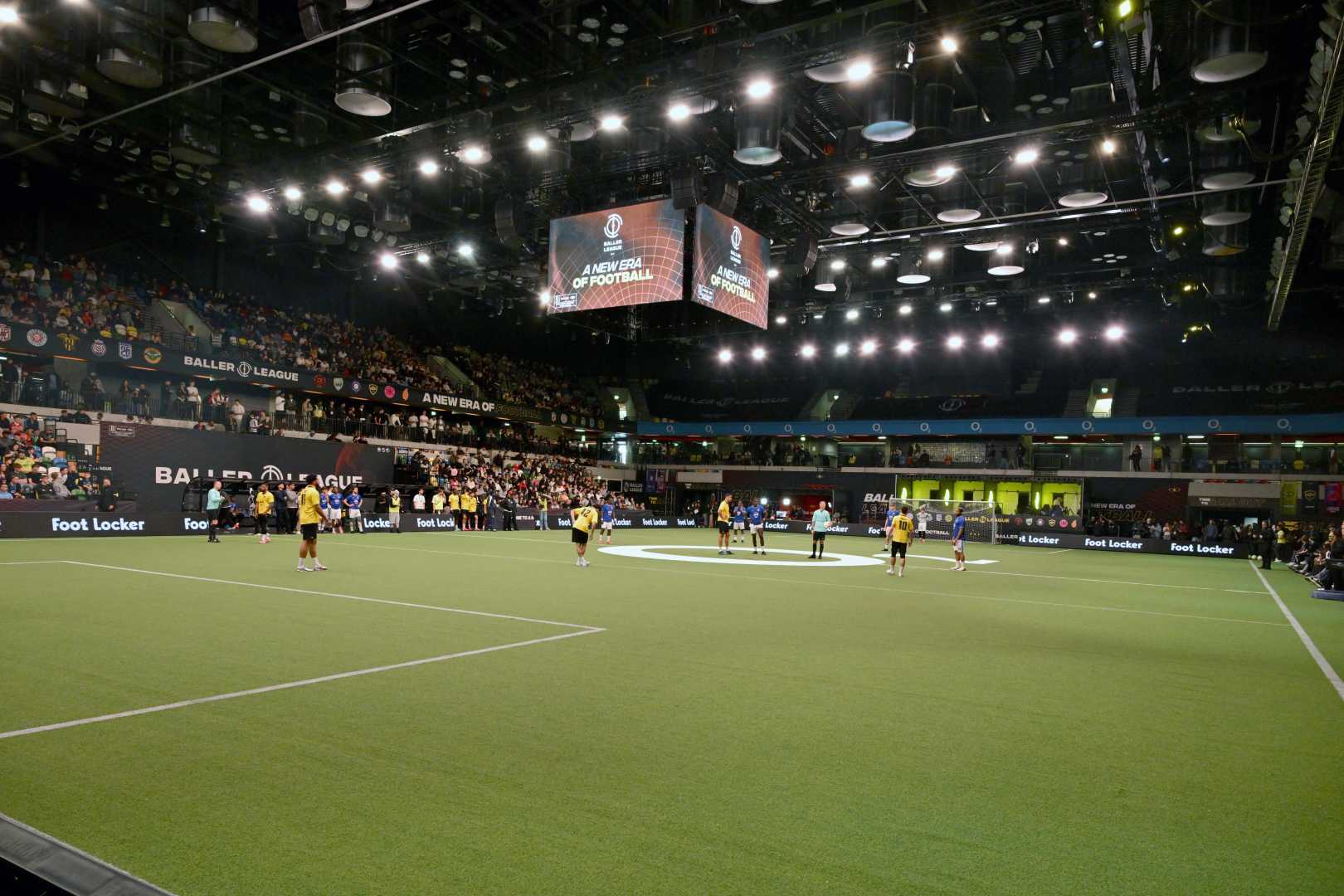Sports
New Soccer Tournaments Aim to Captivate Younger Audiences

London, UK – The Copper Box Arena in London felt more like a nightclub than a soccer venue on June 3, 2025, as former midfielder Josh Harrop took to the field in the Baller League. The atmosphere buzzed with music and excitement as fans and social media influencers documented the unique event.
Harrop, a free agent who previously played traditional soccer, initially found the chaos of the Baller League overwhelming. “[Once the game began] I’m thinking, ‘Jesus Christ, what’s going on here?’ This is chaos,” he said to ESPN after scoring in his first match. “But the more the weeks have gone by, the more I’ve learned the rules. It’s easier to adapt.”
The Baller League, featuring a roster of diverse influencers and athletes including Luis Figo and British rapper Dave, is part of a rising trend of alternative soccer tournaments that differ significantly from conventional games. The league is a spin-off of Gerard Pique’s successful Kings League and aligns with events like The Soccer Tournament (TST), which offers a $1 million winner-take-all prize.
Most of these new formats utilize small-sided games, generally 7-v-7, and have unique rules aimed at increasing engagement and going viral. Some involve concepts like target scores and double-value goals, designed to keep games exciting and ensure they end with thrilling game-winning moments.
As soccer evolves, organizers of these tournaments believe they can complement traditional soccer rather than replace it. They target younger audiences, who are described as consuming sports in new ways, often preferring short clips over full matches. Kings League CEO Djamel Agaoua highlighted, “The young generation … they are exposed to much more content. Technology allowed them to navigate this content very easily.”
Statistics support this shift—95% of teens in the U.S. own a smartphone, while 97% of children in the U.K. have mobile access by age 12. This directly impacts how tournaments like the Kings League are produced, as they cater specifically to smartphone viewership.
Meanwhile, the World Sevens Football league recently debuted as a seven-a-side women’s competition, offering $5 million in total prize money. Aly Wagner, who leads the initiative, explained that these competitions focus on entertainment value. “What do we know about this younger demographic today? They consume sports differently,” she said. “These moments will be, you know, shareable moments across all sorts of social media outlets that will hopefully accelerate the growth of women’s soccer.”
During the tournament, players like Kenne Kessler scored in critical games, bringing attention to the newly formed leagues. Kessler noted the excitement of playing in sold-out stadiums, as well as the visibility from streaming on platforms like YouTube.
As the conversation around alternative soccer continues, the common thread remains the appeal to new demographics and cultivating new fan bases. Harrop’s coach, Eva Kray Batousol, has already seen kids wearing Baller League jerseys, indicating a shift in engagement among younger fans. “If I don’t make it into the Premier League, I could potentially go and play in Baller League alongside playing non-league,” he said.
Despite some traditionalists dismissing these new tournaments, leaders involved in the start-ups express a clear intent to coexist with classic leagues. Agaoua stated, “We’re not going to replace … the Premier League. We’re actually giving something alternative, and we are bringing new fans to the football ecosystem.”












